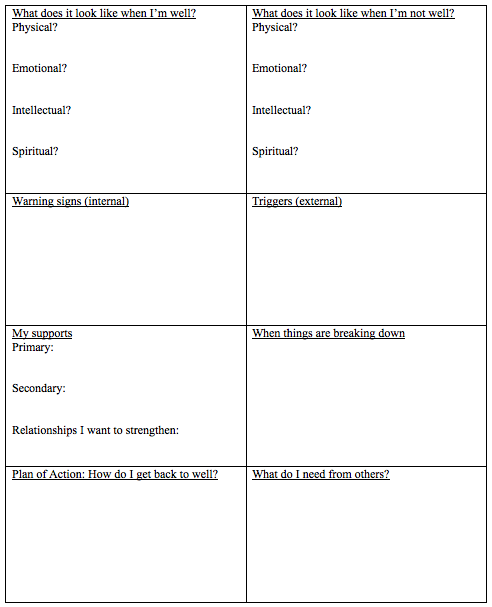Self-care is a word we hear a lot in our industry, not just for clients but for professionals as well. How does one define self-care? Is it true that we need to implement self- care in order to prevent burnout? To better understand fatigue, burnout, and the concept of self-care, let’s take a closer look at each of these elements and how they contribute to wellness.
Symptoms requiring Self-Care
For many professionals, self-care becomes something to explore when functioning declines. Our clients come to us because their lives are being disrupted and self-care may be needed to recover balance. We are our own worst clients in the idea that we can talk about the importance of self-care to others, but don’t always put it into regular practice for ourselves. The result of limited or absent self-care is burnout, and burnout can be long lasting or pervasive as it spreads beyond our careers into our personal lives and beyond. In order to explore the impact of burnout for ourselves and our clients, we may find the following list helpful (adapted from Vital Hearts).
- I don’t know how to relax.
- I feel irritable more than I’d like.
- I feel disconnected from my emotions.
- I’ve isolated from my family.
- Nothing makes me laugh anymore.
- I take comfort in sweets.
- I have no energy to listen to my family when I get home.
- I escape by sleeping more.
- I have no empathy at the end of my work day.
- I’m ignoring my relationships.
- I can’t seem to disconnect from work.
- I am experiencing more anxiety.
- I just want to get away sometimes.
- I’m angry at my clients for asking so much of me.
- I feel underappreciated.
- I can’t read or watch the news anymore.
- I don’t share my work with my friends, they just don’t get it.
- I don’t socialize with friends much anymore.
- I feel restless but don’t want to do anything.
- I have lost confidence in myself.
- I feel pessimistic as the result of my job.
- I feel sadness.
- I feel drained, I have no energy.
- I feel angry.
- My health has declined.
- I feel like nothing I do makes things better.
- I can’t concentrate.
- I cry much easier than I used to.
- My road rage has gotten worse.
For some, the list above starts the conversation about how much and to what degree life has been impacted by factors of our work as helping professionals. Burnout untreated can lead to long lasting decline in quality of life and connection to others. Burnout can take away the passion of why you do this work. As we struggle to practice what we recommend to others, how do we change our patterns to support reduction of the negative impact of burnout? Below are some action steps.
Wellness Recovery Action Plan (WRAP)
Several organizations in Colorado see the importance of self-care, including the Colorado Mental Wellness Network. Selected by the Colorado Mental Wellness Network and endorsed by SAMHSA, the Wellness Recovery Action Plan (WRAP) is being utilized with various populations to support health and well-being. Colorado Mental Wellness Network supports change through peer to peer connection and wellness education. Through these efforts, they continue to implement WRAP plans within various communities, including those experiencing homelessness and within Department of Human Services caseworkers. What they found was that empowering individuals to notice wellness as well as health decline could support putting self-care into action. Below is an example of a wellness plan that can be used for both professionals and clients to best support their process of identifying and implementing self-care.
Building in Boundaries
In addition to exploring and customizing self-care for meaningful change, boundaries may need to be re-evaluated to prevent burnout. For many helping professionals, long hours, after-hours texts, emails, or calls, client crisis, and urges to help, prevent successful disconnection from work. Technology makes it easy to check work emails 24 hours a day and calls may come in from various parties regarding client care. If there is flexibility to re-evaluate the schedule of work versus home life, it is encouraged. However, the schedule assigned may not be in your control. If this is the case, other means of implementing boundaries may be needed and can include the following:
- Put an out of office message on email and voicemail to notify others of when you will respond.
- Separate work and home phones to leave the work phone off during days off.
- Identify a crisis coverage person to give to clients during vacations or other scheduled absences.
- Schedule time off in your calendar(s) to support appropriate boundaries.
- Schedule windows of self-care, even if just for 20 minutes, during your work week.
- Be concrete with hours for yourself and your clients as to when and how they can reach you.
- Find self-care you can commit to and put it in the calendar monthly or weekly.
It is with hope that we can create momentum from the talk of self-care into action steps as we continue in our roles as helping professionals. Modeling self-care is both in the benefit of our clients and ourselves as we navigate the busy world of demands in hope of positive change. May we all begin to develop quality self-care in order to find wellness in the path of hard work!



